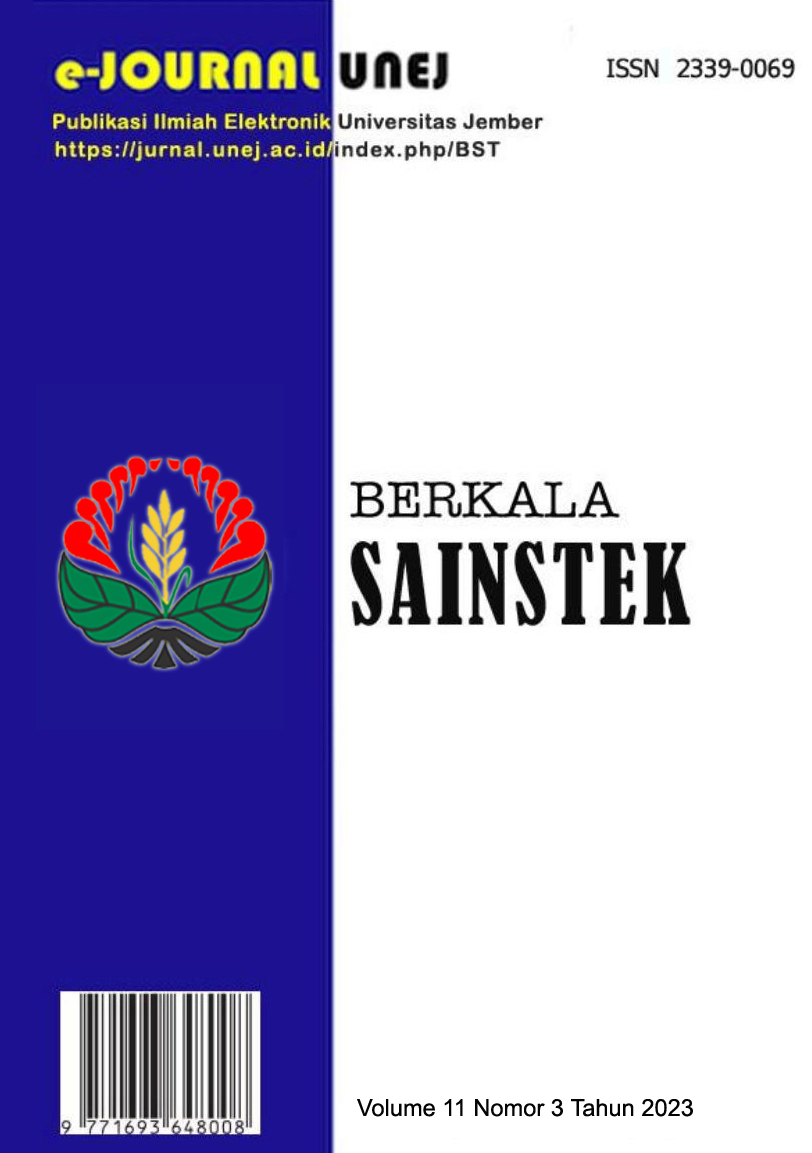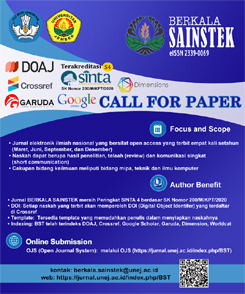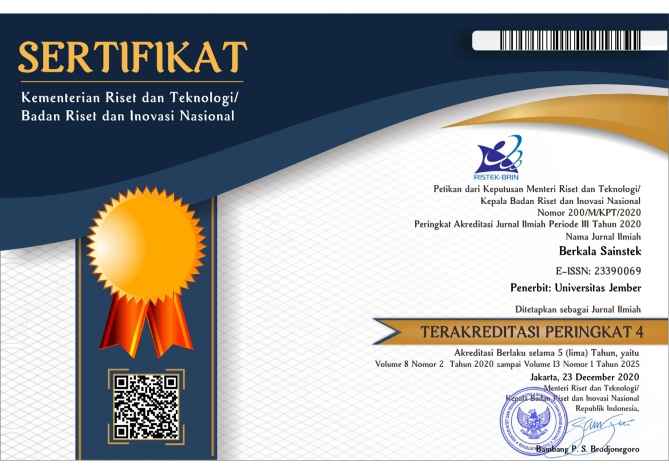Production of Photosynthetic Pigments from Spirulina platensis Under Different Light Intensities
Abstract
Photosynthetic pigments from microalgae have great potential biotechnological applications, as healthy food colorants and cosmetics. The production of photosynthetic pigments depends on many environmental conditions, mainly light intensity during the cultivation period. The present study aimed to determine the productivity of photosynthetic pigments in the biomass of S. platensis, including total chlorophylls, carotenoids, and phycocyanin, under different light intensities: 40 µmol m–2 s–1 (lower light intensity) and 70 µmol m–2 s–1 (higher light intensity). The results showed that S. platensis culture responds to changes in light intensity by changing the composition of photosynthetic pigments as an adaptive mechanism. The higher carotenoids content (69.69 ± 7.47 µg/g dw) was found under high light intensity, meanwhile, the higher chlorophyll (1495.47 ± 279.00 µg/g dw) and phycocyanin (4995.49 ± 576.52 µg/g dw) contents were observed under low light intensity. The highest productivity of photosynthetic pigments in S. platensis was shown by phycocyanin (318.86 ± 44.22 µg/L/day) and cholophylls (95.38 ± 19.35 µg/L/day) which were produced under low light intensity. Our results show that changes in light intensity can contribute to a stronger effect on the productivity of algal pigments for human health benefits and food colorants.

This work is licensed under a Creative Commons Attribution-NonCommercial 4.0 International License.




.png)



